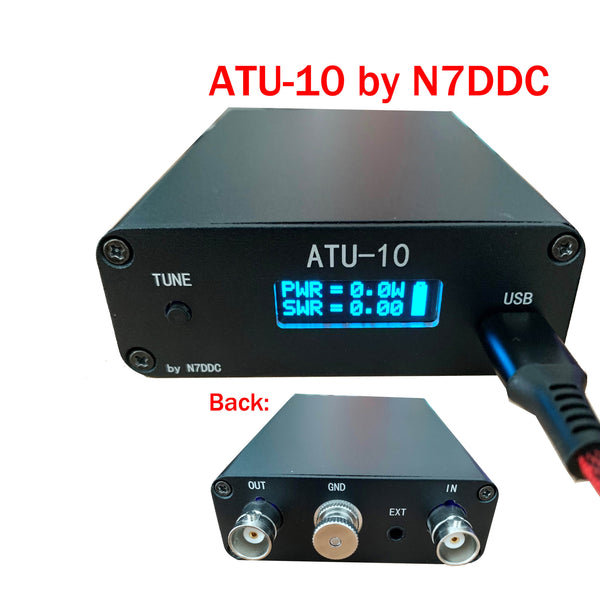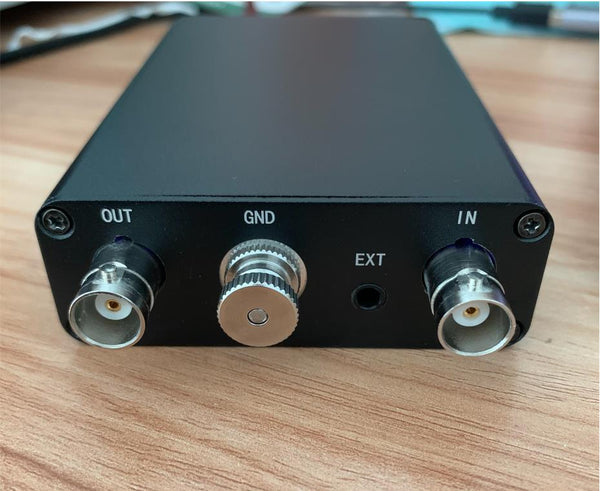ATU-10 QRP by N7DDC Automatic Antenna Tuner 1W-15W 1.6 version program
ATU-10 QRP The Tyny QRP Automatic Antenna Tuner
Input power: Minimum 1W, Maximum 15W
When you browse to this price, you may think it is expensive, but please check the IM41GR relay sold by Mouser. It costs $3 each, and the price of the relay is $45. We purchase raw materials in strict accordance with the BOM of N7DDC. Immersion gold circuit boards have UL certification. The chips are imported from the United States. 2 PCS 14500 lithium batteries are CE certified. The relays are hand-welded. The magnetic ring is also hand-wound. Even the front and rear panels of the housing are Using aluminum alloy material, CNC cutting and opening, the raw materials are not listed one by one. At this retail price, we are basically selling at a loss. Our goal is to allow radio enthusiasts to experience the convenience and happiness of N7DDC products.
size:L*W*H:100*75*26 mm
Weight: 0.3kg
List of raw materials:
1. PCB uses immersion gold circuit board, UL certification.
2. All high-voltage capacitors are made of NPO materials, with a voltage resistance of 500V.
3. All magnetic rings use micron iron powder produced by German BASF6000, with super low loss and super low heat.
4. All relays use AXICOM latching relays, produced in Switzerland.
5.Built-in lithium battery 14500 (850mAh) X2. Note: If the battery is larger than 850mAh, it is a dummy battery.
6. BNC female connectors, 50 ohm, pure copper material.
7. Aluminum alloy shell, front and rear alloy panels are cut by CNC.
Now it is1.6 firmware:
New in FW version 1.3
1 - Display memory feature for last SWR added
2 - full automatic mode error solved.
New in FW version 1.1
1 - the control methot has been reworked, there is no more sleep mode. Now the tuner either shines on the display for 5 minutes after it is disturbed, or turns off after 30 minutes if it is not touched and the transmitter is not turned on. For these 30 minutes, the tuner constantly monitors the power supplied and instantly lights up the display when needed. The current consumption in this monitoring mode is 4 mA. Long press on the button now turns the device on and off.
2 - external control using the Icom protocol is implemented, works in both directions. That is, when the tuner button is pressed, the transceiver automatically generates a carrier for tuning and when changing from band to band, the transceiver initiates tuning by the tuner. When you press the button of external tuner control on the transceiver, the tuner is automatically run if ON or reset if OFF position.
Description
The tuner is assembled in an affordable Chinese case 100x71x25 mm, the front and rear panels are made as PCB, in the same way as the main printed circuit board. On the front panel there is a control button, a small 0.91" OLED 128 * 32 display and a USB Type C connector, used to charge the tuner's built-in battery and connect to a computer to change the firmware.
The rear panel contains RF BNC connectors, a ground clamp and an external control interface connector that can be connected to the transceiver for more convenient control of the tuner.
The control button has only 3 functions - a short press resets the tuner and sets all relays to their initial state, in which all reactive elements are disabled and do not affect the signal flow through the tuner, a long press causes the tuner to enter the tuning mode and a very long press for more than 5 seconds causes the firmware version to be displayed on the display. The display mainly shows the current transmitter power and SWR in the transmitter cable and sometimes briefly indicates the modes.
The tuner is built on IM41 bistable relays, which means that a significant current is consumed by the tuner only for a short time during tuning; in rest mode, the tuner's relays retain their state for an arbitrarily long time, without consuming power.
The built-in battery consists of two Li-Ion 14500 batteries connected in parallel. The best examples of these (SANYO) have a capacity of 800 mAh each, the worst ones are usually 400 mAh. The tuner has 3 power consumption modes - the operating mode, when the display indicates the parameters, lasts 5 minutes, after which the tuner falls asleep and the display turns off. You can wake him up with a short press on the button. After 30 minutes of sleep, the tuner turns off completely and you can turn it on by holding the button for a long time (more than 3 seconds).
The current consumption in the operating mode is 12 mA, in the sleep mode 170 μA, in the off state 37 μA.
The main microprocessor of the tuner is PIC16F18877, another PIC16F1454 processor is used as an embedded programmer. It should be flashed once using the programmer with a special firmware, after which it will be possible to change the main firmware of the tuner as many times as necessary without resorting to special means. After connecting the tuner to the computer, a new logical disk with the appropriate name will appear in the explorer, in which you can find a link to the firmware repository. To flash the tuner, it is enough to copy the firmware file to this disk, the process takes a couple of seconds and the tuner is flashed at the same moment when the file copying is completed.
There is also space for two dual-color LEDs with a common anode on the board, they can be installed if you do not need an OLED display. The right LED indicates the battery charging process, the left LED indicates the operation. In operating mode, it blinks briefly in color every three seconds, depending on the battery charge level.






